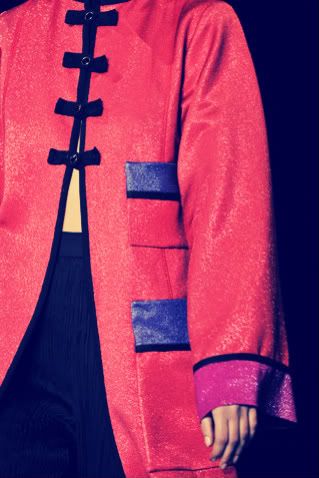
I was going through some old papers I wrote freshman year of college and I found this one called: "Orientalism: Eastern Probing into a Fascinating World" and I was immediately taken back to Marc Jacobs work in Louis Vuitton's Spring 2011 Ready-to-Wear Collection. Here are some snippets from the paper.

“Consider the workings of other world cultures." In the video presentation “An Imaginary East”, the curators of the Metropolitan Museum of Art, proposed that this statement was the beginning of Western fascination with Eastern dress. From this, originated what we know now as “Orientalism”, the “exotic other”. The video examined our Western probing into the cultures so mystical and foreign to our own. An interesting point highlighted was that the easiest way to take a piece of anyone’s culture is to adopt their way of dress. In the beginning of the presentation, a letter written by Montague states that the principals of Islamic culture were “liberating” and that by wearing its garments in the form of Turkish dress, “admirably” supplanted a “need not fulfilled at home.” The video continued to stress that the Orientalist movement was “representation”, representation of the body and representation of how Eastern dress “changes the body." Changes in the body may result in fantasies of being a pasha, generated from wearing 19th century Turkish inspired smoking jackets, or women’s bodies being liberated by Poiret’s use of Eastern dress. The kimono, caftan, and sari were shown as staples of Eastern dress frequently borrowed and copied from Western dress.
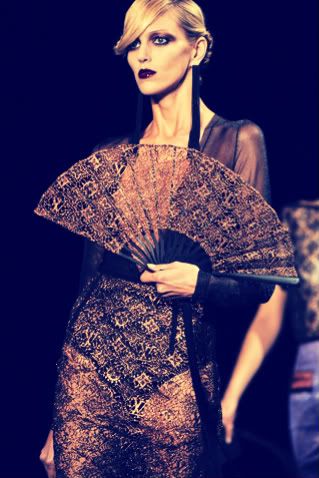
His “A Thousand and Second Nights” soiree captured the essence of Orientalism, by creating a replica of Aladdin’s palace, “projecting sensuality” with his “concubines lying at the steps of his throne,” with his wife Madame Poiret wearing lap shaped tunic. Another interesting point to be made about the video is that mixing cultures from different countries was common. One may find a Chinese pagoda under a Northern African Tent in a pattern on a garment.
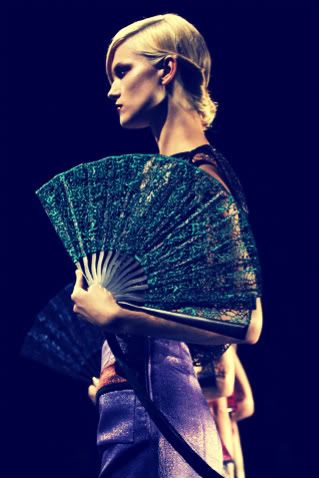
While one may praise the West’s fascination with the East, the excerpt from “China Chic: East Meets West” points out that there is not only love for the West, but critics of this love. When discussing chinoiserie and Oriental dress inspired and directly taken from the East, the excerpt notes that it is seen as somewhat stereotypical of the Eastern culture. The excerpt goes as far as saying that designers may not even be able to draw inspiration from the east because they may be engaging in “neoimperialistic appropriation”. It highlights the fact that when foreign objects are incorporated into Western dress these Eastern garments may be “stripped” of any cultural and historical links. Although the culture may be lost, the authors write that Western “society and culture has become more international and multicultural and yet, the prolific release of multiple images of the Eastern garments destroys the “mysticism” and fascination surrounding it. The article directs readers to the viewpoint that European imperialism works also to elevate critics’ view of the West taking on a deep and somewhat passionate love for clothes of the Orient, going as far as saying that this imperialism “demonized” the Orient.
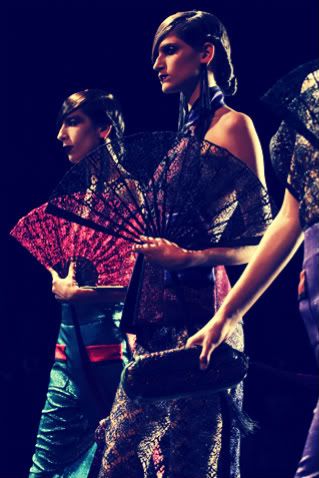
Continuing with the description of the West adoration for Eastern dress, the excerpt explains ways of adopting Oriental dress. Traditional Chinese dragon robes were being used as dressing gowns, while Chinese ladies jackets and Japanese kimonos in particular continued to heavily inspire Parisian designers. Paul Poiret was one such designer whose “Confucius” robe and “Mandchou” tunic served as an antenna of how to properly add in Eastern dress into the Western wardrobe. An interesting point to note is that after the attack on Pearl Harbor in 1941, the attitudes of “contempt” towards Asia that the West carried in the first half of the twentieth century, were released when Chinese ambassadors like Madame Chiang Kai-shek and her several speaking tours to America, help facilitate better feelings toward China with her style, class and grace.
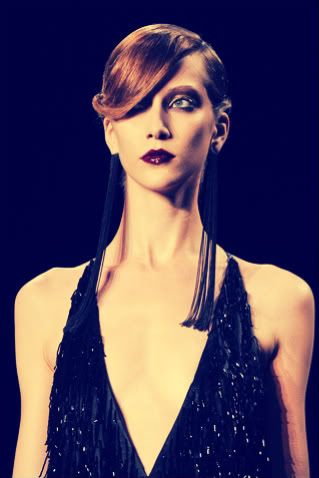
When asked to describe my feelings about the Orientalism movement and the West adoration and fascination to the Eastern way of dress, I began to think of how interesting it is to experience a piece of another culture. Recently I went to Ghana, West Africa and got to experience a deeper aspect of my own African culture. In the end of China Chic: East Meets West the author talks about how there is a feeling of ambivalence to the whole idea of Orientalism and how many Chinese people had a vague sense of their sartorial history. I completely understand this ambivalence from a situation such as this, because as I walked the streets of Accra and zigzagged my way through the crowded marketplaces, I saw beautiful works of art and clothing, yet I also understood how some of the creators of these beautiful pieces did not understand the power and beauty of what they made.
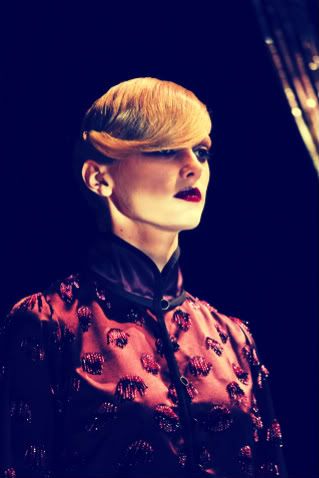
To me, Orientalism is the adoption of the culture of the East being changed here and there to fit the lifestyle and dress of the Western citizen. It directly relates to cultural authentification and explains why some would have conflicting feeling towards the movement, because it is taking a piece of someone else’s culture and not directly representing your own.
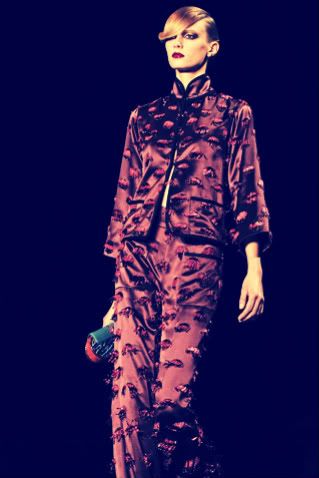
All Images: Style.com
The video “An Imaginary East” describes the Orientalist movement as the “exotic other”; a movement where one can change their identity if but for even a moment, liberate themselves and delve into exotic fantasies. Why wouldn’t designers fascinated with this? It is a designers job, in my opinion, to invoke the imaginative, to take people’s minds to another world and to ultimately inspire people to see the beauty of the world through sartorial creation, so if the appeal of Eastern dress, is supposed to be authentic and staying true to culture, then why have some in the past taken time to destroy it with condescending attitudes?
Love,
Ashley
You can find out more about orientalism, Eurocentrisim, chinoiserie by watching "An Imaginary East Orientalism: Visions of the East in Western Dress" or reading "China Chic: East Meets West" by Valerie Steele and John S. Major

this is really good Ashley :)
ReplyDeleteThanks!
ReplyDelete